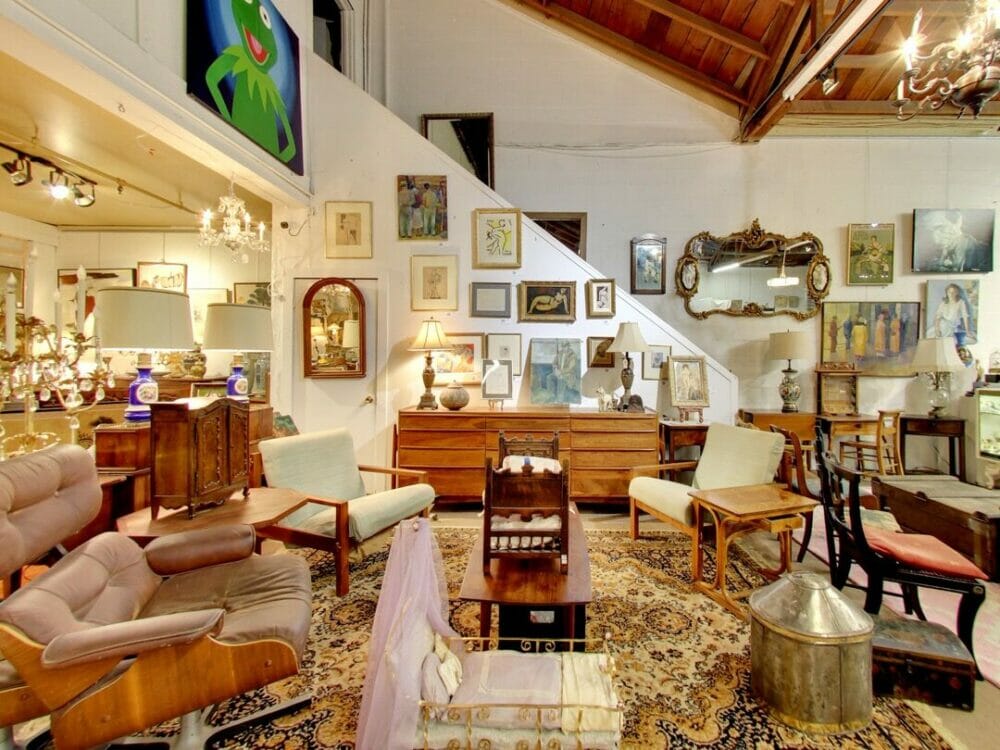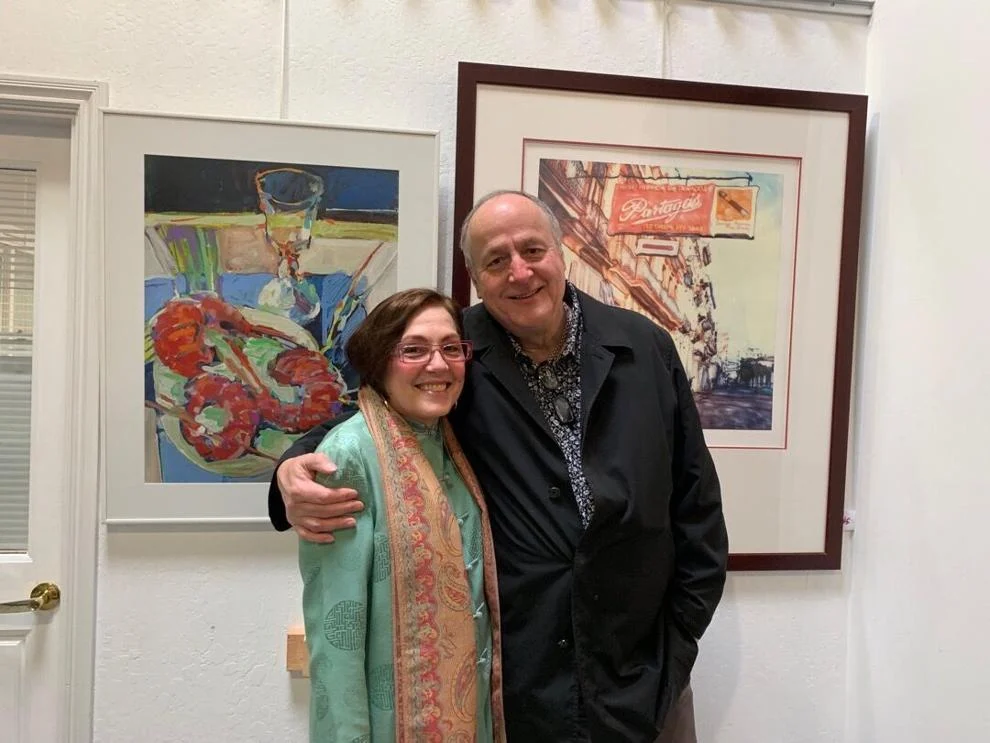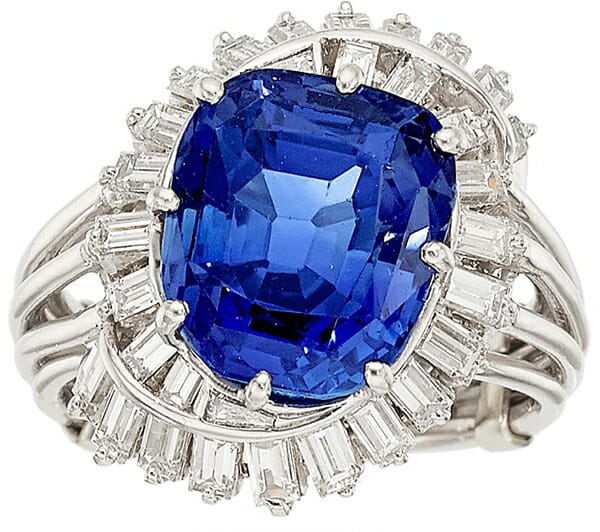Article About Us in The Nob Hill Gazette

Martin Codina spent over two decades building an estate liquidation business, yet his success, and most memorable tales of treasures lurking in Bay Area estates, are anchored by something not easily defined: A long history of hunches.
“I’m always asking, ‘What if?’” admits Codina, the founder of Fine Estate Inc. and author of Liquidating an Estate, a book that helps demystify the process of parting with the contents of a family member’s estate.
Codina had a hunch about a sapphire cocktail ring that languished in a Financial District safe-deposit box for decades; a blackened baseball bat buried in the bowels of an East Bay basement; a tarnished knife tucked into a piece of furniture in an attic. These hunches required a leap of faith from Codina’s clients, as well as the money and patience to put the pieces through the rigorous process of testing, authentication and, in the case of the bat, serious cleaning.
The cleaning cost $5,000, a drop in the bucket for what the bat — which turned out to be a signed Babe Ruth Louisville Slugger — later fetched: $150,000. The cocktail ring’s mesmerizing gemstone was indeed what Codina had hoped: a Kashmir sapphire, commanding a staggering $550,000 at auction. But it was the antique knife, which surfaced earlier in Codina’s career and turned out to be from San Francisco knifemaker Michael Price, reaching $93,000 at auction, that marked the point where a hunch signified the first step on the often-arduous journey to certainty. “I had to know something before I sold it. That’s what forced the education,” he says.
Antiques Roadshow-worthy items are a rarity for Codina, but they’ve surfaced enough to inspire a gradual shift for Fine Estate, which Codina founded in 1996 after seeing firsthand what people would pay for used furniture. He’d been running a niche business refurbishing vintage furniture, scouring garage sales for pieces to repaint, which he called “blanks.” When his workshop got too full, he held a sale of the items he’d never gotten around to painting — and the profit was impressive.

Before long, he was holding estate sales in homes in San Francisco and across the Bay Area.
Four years ago, Codina took a detour from on-site sales and leased a warehouse in San Rafael that doubles as a showroom three days a month, highlighting multiple estates while drawing a diverse clientele — decorators, dealers, deal seekers — in the market for everything from a Liberace-worthy white lacquered baby grand piano (those buyers are rare, by the way) to art, fine jewelry, rare books, record albums, silver and collectibles dating back centuries.
When Codina found himself continually sending clients’ bigger-ticket items to auction houses, he decided to jump into that arena, too. A few months ago, he opened a small auction house down the street from his showroom, recruiting Bonhams’ former director of art and décor Christine Skinner as his auction director, along with staff that includes a bevy of Bonhams veterans.
“We are known as a boutique auction house with a focus on fresh-to-market property,” explains Skinner. “Our goal is to not run large quantities of property through auction in a factory-like manner, but rather to re-home objects and connect people with things that fulfill a purpose or need, and hopefully spark some joy, wonder and amusement along the way.”
Not surprising, even Codina’s auction house has a story: The San Rafael building is the former record-ing studio and operations headquarters for the band Santana.
Between the showroom and auction house, Codina and his wife, Valetta Ciarla-Codina, employ a staff of 18. And while household estates make up the bulk of his business, Codina calls Fine Estate a “project-based personal-property sales company.” His staff makes house calls to evaluate collections large and small in homes, storage units — even dingy basements. While there’s no shortage of treasures, the public’s taste for them is con-stantly changing
“When I first started, nobody cared about midcentury,” Codina recalls. “Everybody wanted an antique and today hardly anybody wants them.”
How does he help clients sell the things that seem to be no longer in demand, like Victorian furniture and vintage china sets? By managing expectations. Codina believes in imparting as much knowledge as possible to potential clients — regardless of whether they ultimately enlist his services.
“When you’re selling a collection, you want to look at the aggregate result, not the specific result,” he explains. Additionally, “value determines venue” and vice versa. Items are placed accordingly, in the showroom, auction house or sent to a larger house that can reach a global market.
John Guthrie, co-executor of the Marilyn Gump Trust, calls Codina’s staff “godsends” for their help liquidating the eclectic 2,000-piece estate of a descendent of the family behind the eponymous, and recently shuttered, Gump’s retail store. Prior to her death in 2017, Marilyn Gump spent years restoring her former sea captain’s house in San Anselmo, while amassing eye-popping collections of art, vintage dolls, toys, hand-bags, silver and souvenirs during her years traveling and running an antiques business.
Codina held a showroom sale featuring the bulk of the collectibles, while sending a handful of items to specialty auction houses
“Martin and his team find treasures either through expertise and/or research. However, it doesn’t stop there,” says Guthrie. “They also discuss those items with you as the seller, adding provenance or personal stories to the items, which they pass on to potential buyers. It was this and many other aspects of Martin and his team paying respect, if you will, to the previous owner’s personal property and not looking at them as simply inanimate objects.”
The Gump sale attracted Philip Buscemi, who works in special projects at Ken Fulk Inc. Buscemi is a regular at Codina’s showroom sales, often with his three small dogs in tow, in search of what he calls “perfect objects that have history and meaning to us and that are cool-looking.”
“They have such great inventory. We tend to buy en masse when we have a big project,” he admits, noting he once spent $8,000 on vintage books alone. Recently, he scored a hand-carved wooden chest for the choir loft of Saint Joseph’s Arts Society, Ken Fulk’s new SoMa membership club. “I don’t know if I want everyone to know about this amazing secret,” quips Buscemi.

Liz Howard, a longtime San Franciscan who recently moved out of state, was tasked with selling collectibles and jewelry from her mother’s estate, including the now-legendary sapphire ring once appraised at $15,000.
“This was not a fast process. It took us nine to 12 months to get this done. The fact the sapphire went to auction for half a million was solely due to Martin recognizing its worth. Martin kept me on track to be patient, rather than sell quickly,” Howard says, adding, “He never told me what it would sell for, so that I never had any expectations — which I thought was brilliant.”
“Time adds value,” Codina acknowledges. “The quicker you need to sell something, the less money you’ll get.” And though he has no shortage of customers who collect Victorian jewelry and centuries-old silver, Codina is aware of the rum-blings in the business. “Dealers say the antiques market is dead,” he says, shrugging.
But Codina feels certain about one thing. “The absolute best stuff that will come to auction between now and the next five years is going to come out of middle-class and upper middle-class family homes,” he says. “The treasures that will be coming to market, they’re not known about.”
Call it a hunch.
